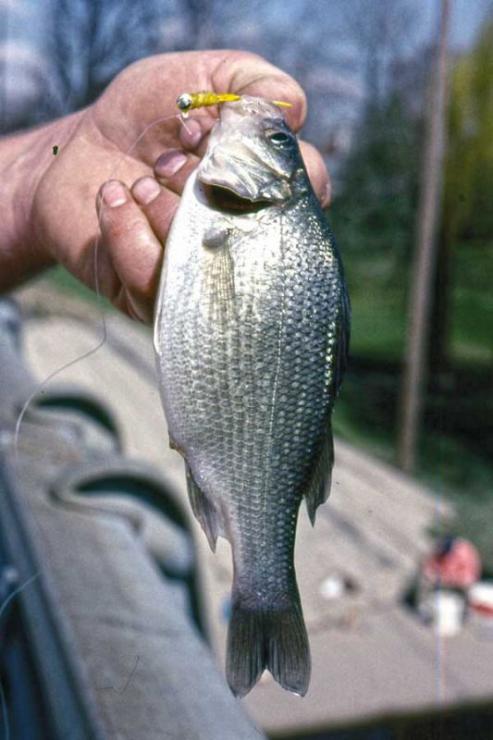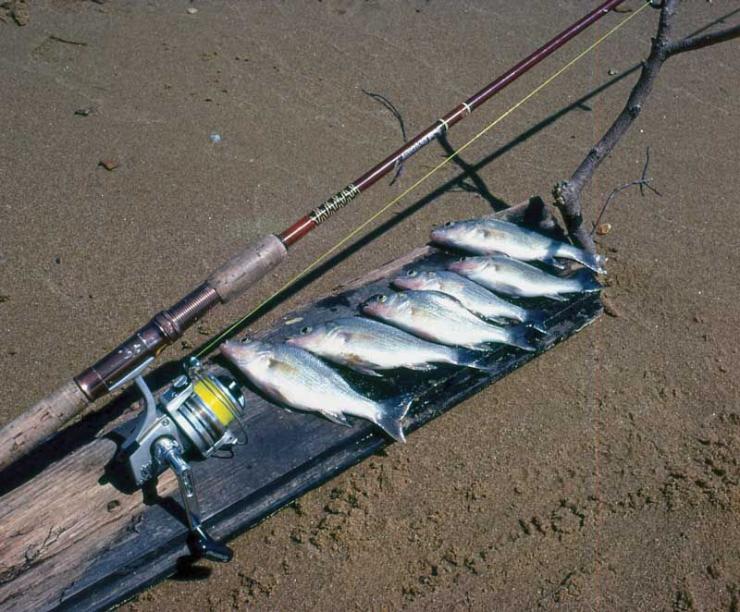If you spend time on the water you have no doubt noticed we are getting more mild days in the winter than we did just a few years ago. When the temperature hits the upper 50s or even 60 in January or February you will get the urge to fish, but you know rockfish season is closed, the blues are vacationing in North Carolina, and flounder have moved out to the Continental Shelf. Fortunately, we still have white and yellow perch available in the upper reaches of the tidal creeks and rivers as well as in the Upper Bay.

For the most part, you can leave your boat securely wrapped up and fish from shore or from a kayak. Tackle used for perch is pretty basic. I have a Shakespeare rod and reel filled with 10-pound mono line that fills the bill perfectly. My perch rig consists of 20-pound Hi Seas mono line with a perfection loop on one end and two surgeons or dropper loops. One loop goes on the bottom and holds the sinker while the other loop goes between the top and bottom loops to hold the hook. The hook can be attached by pushing the loop through the eye and then pulling the hook back through the loop. You can also tie the hook inside the loop.
Another rig that works well for perch is a single hook fished directly under a bobber. I usually tie this hook to the end of my running line and place the bobber at a distance that approximates the depth of the water. One or two split shot may be required to get the hook to drop down. I have had good success using the bobber as a popping cork. I cast out as far as possible and then let the bait settle to the bottom. After a few seconds I twitch the rod tip allowing the bobber to make a commotion on the surface. Then let the bait settle back down. The fish usually pick up the bait on the drop. I think the bobber sounds like another fish on the surface and as the bait drops down it looks like easy prey to the perch. I have used a plain old red and white plastic bobber as well as a small popping cork for this purpose.
Perch baits run the gamut from earth or bloodworms to grass shrimp to live minnows to Gulp!. While tackle shops generally carry some of these items, bloodworms may be hard to come by in the middle of winter as the northern beaches where these worms are harvested freeze over. Grass shrimp also become hard to find in the winter, but I have seen dedicated perch anglers trying to net their own bait around pilings in open water.

As a general rule, yellow perch show up before their white cousins. The very first run will be the smaller males followed by the larger females. The piers around Havre De Grace show up in my reports almost as soon as the ice is off the water. Port Deposit will start producing about the same time. Millington is another early season perch hot spot. Some folks will stick with the easy-to-fish bait action, while others will use small jigs baited with grass shrimp, a live minnow or Gulp!. The jigs are cast up-current and allowed to work on down while the angler uses the rod tip to add some action to the bait. Still, there is nothing wrong with casting out bait, putting the rog in a forked stick, and waiting for a bite.
One location that is usually ice free is a spillway. These are found below every pond on DelMarVa and hold not only perch, but bass and pickerel as well. There is a constant circular current in a spillway, so fishing with bait under a bobber is the most productive technique. The fish will generally pick a station where the current carries food to them. Just let the current carry the bobber around the spillway, and the bait will go over all the best locations. You can also fish a spillway by setting the bait on the bottom and hope a perch finds it.
While perch fishing in the winter is not as good as spending January and February in the Keys, it does get you out on the house and provides some fresh filets for the dinner table.
by Eric Burnley